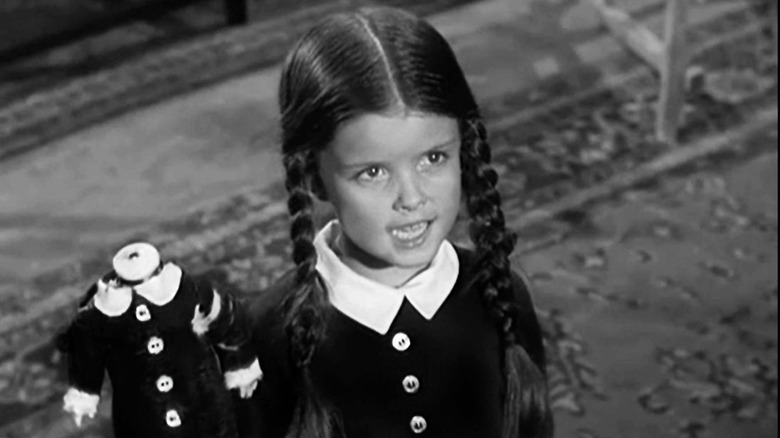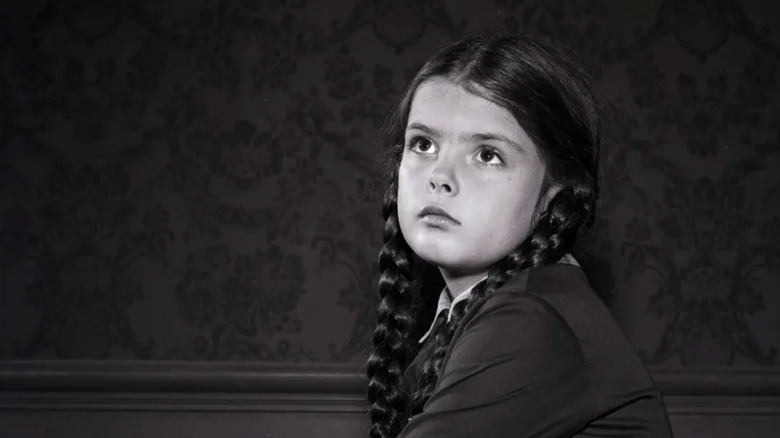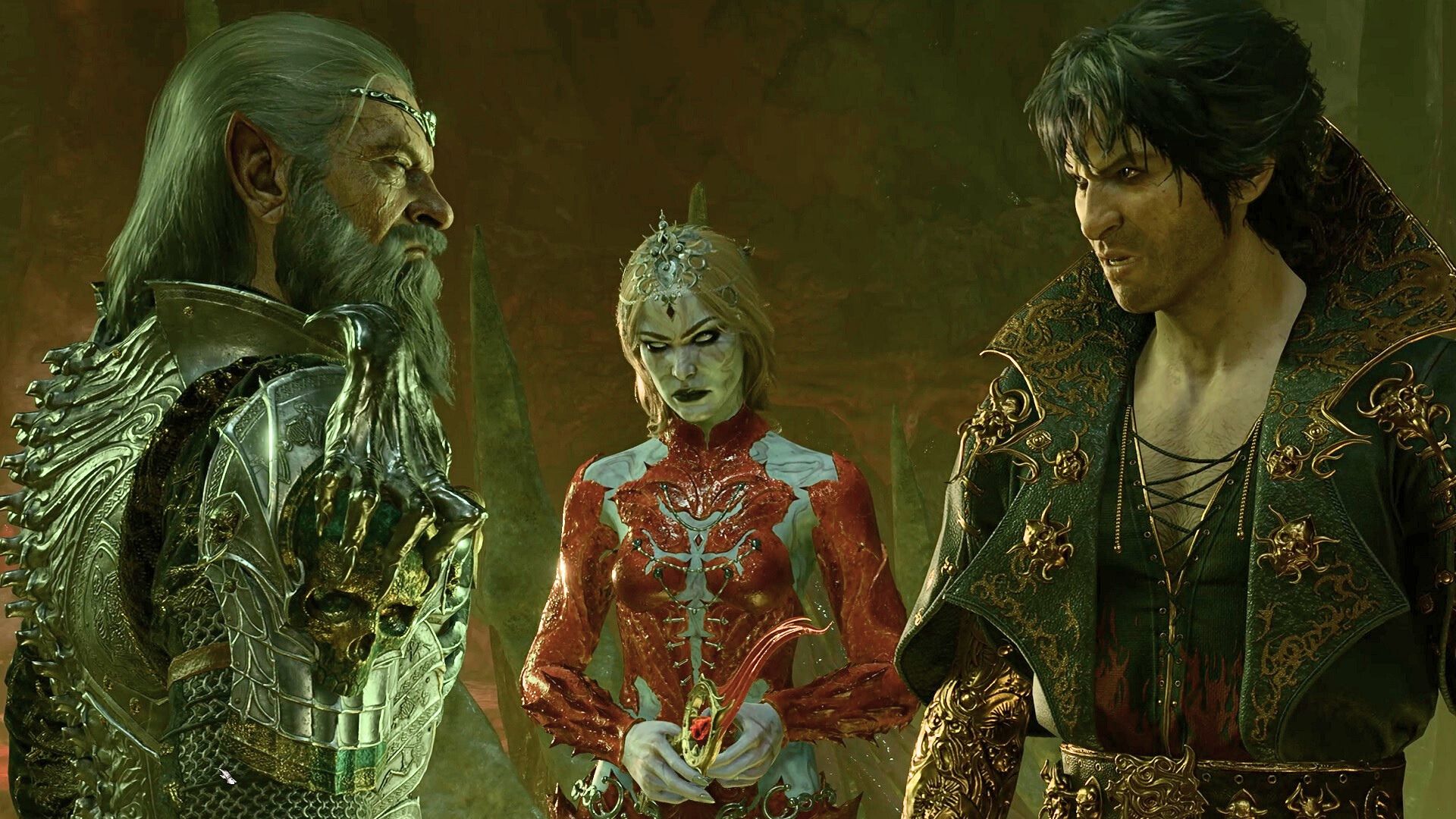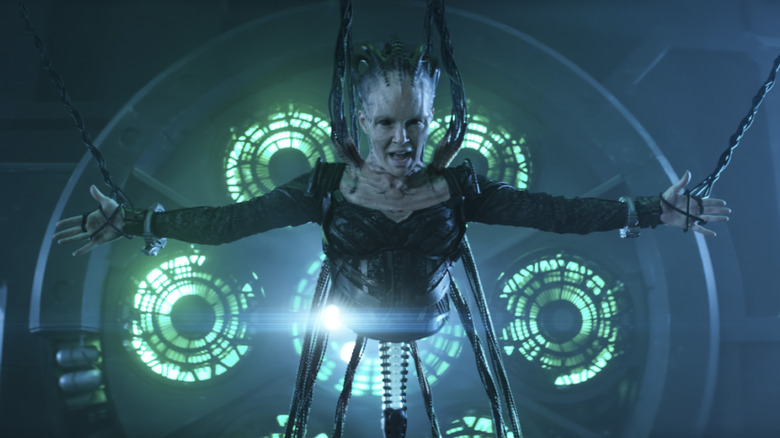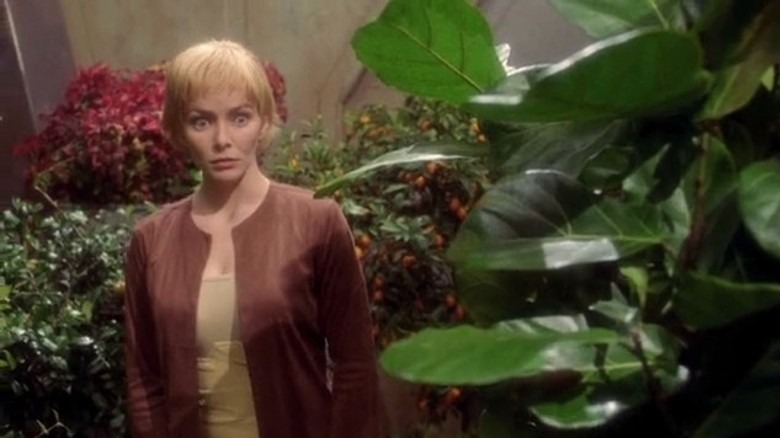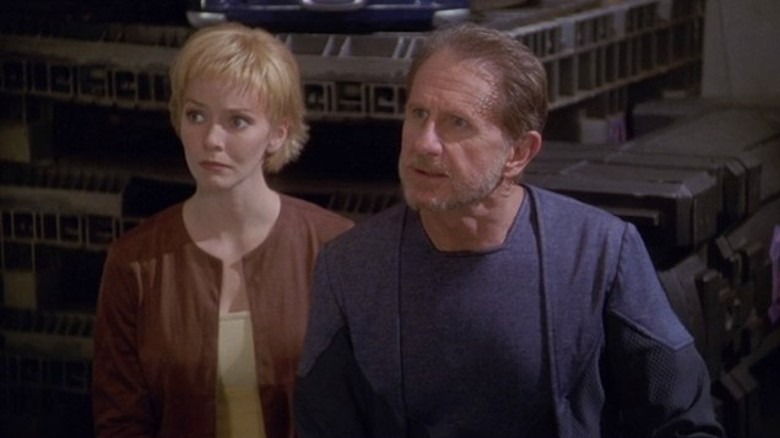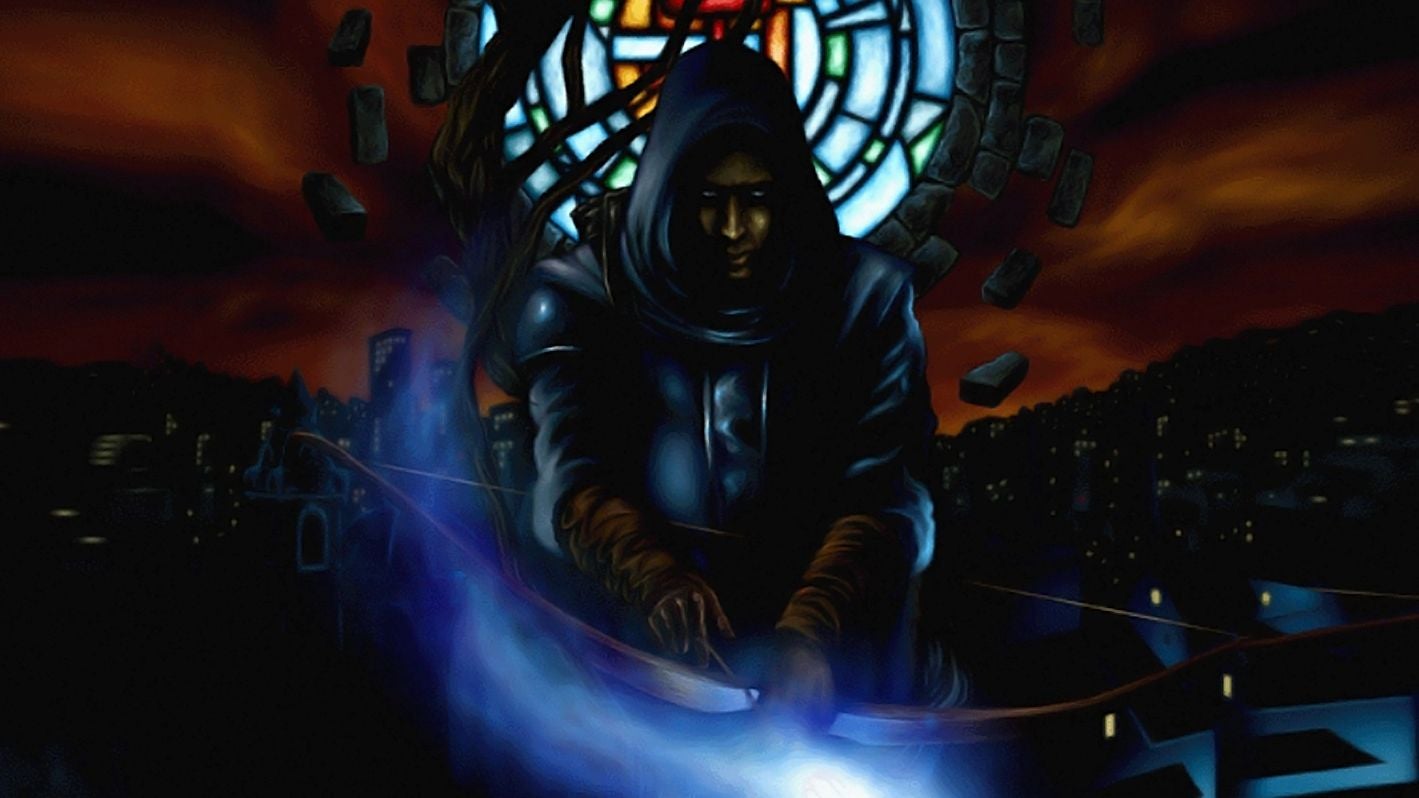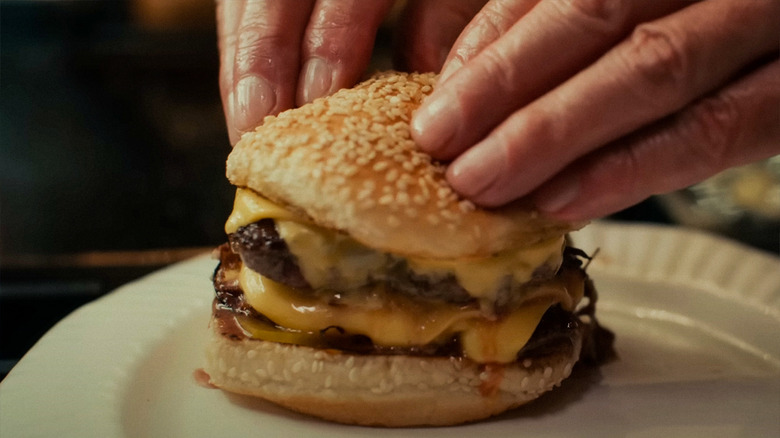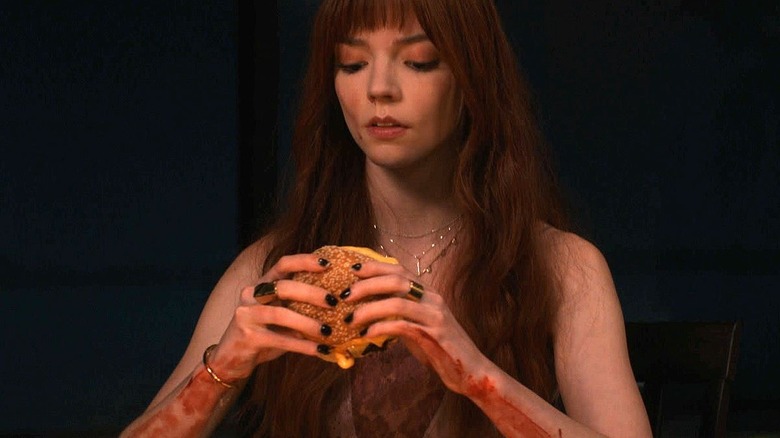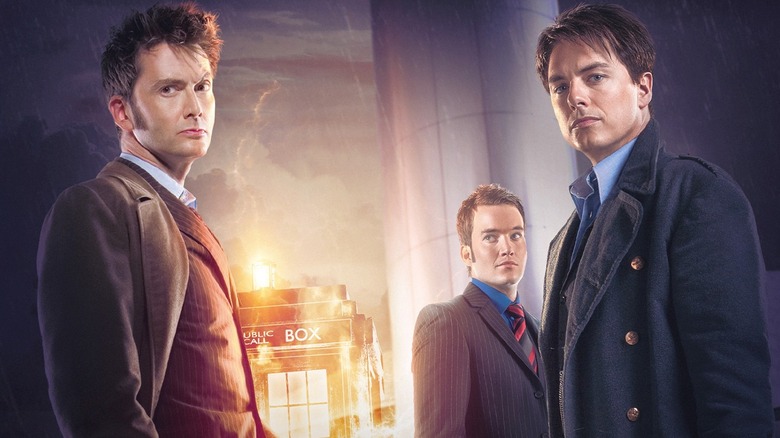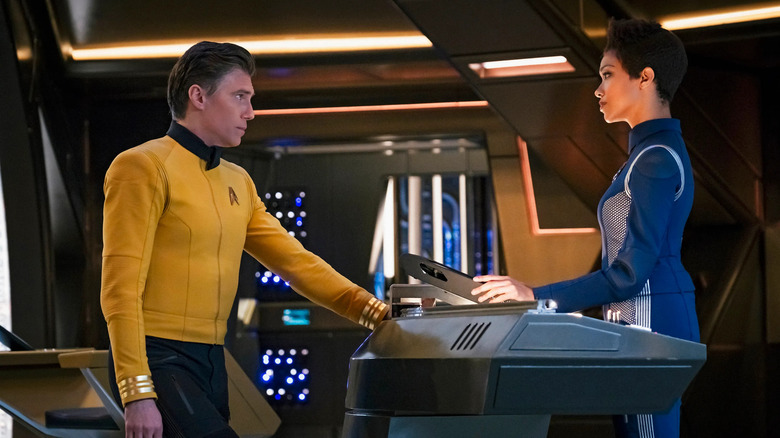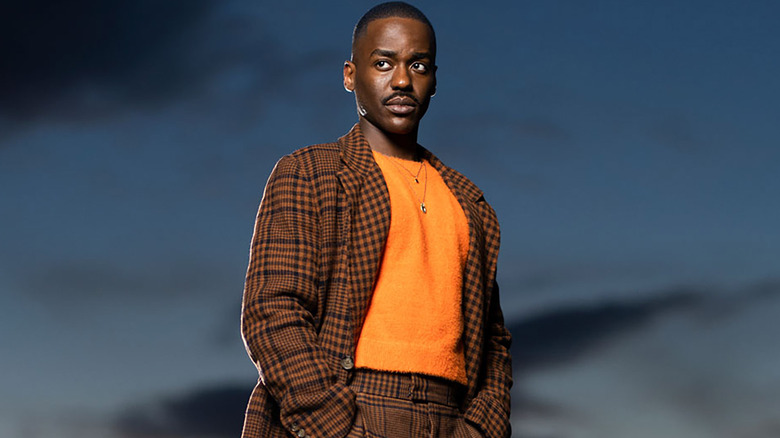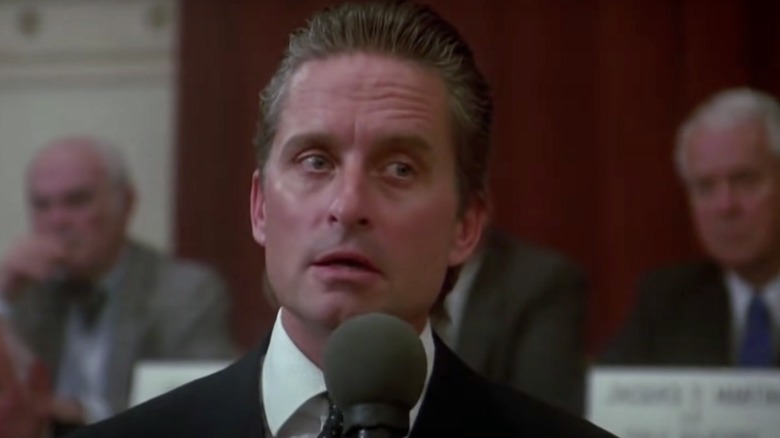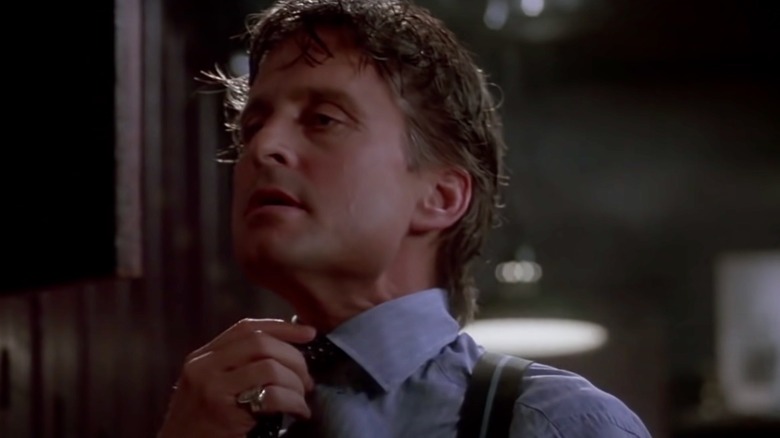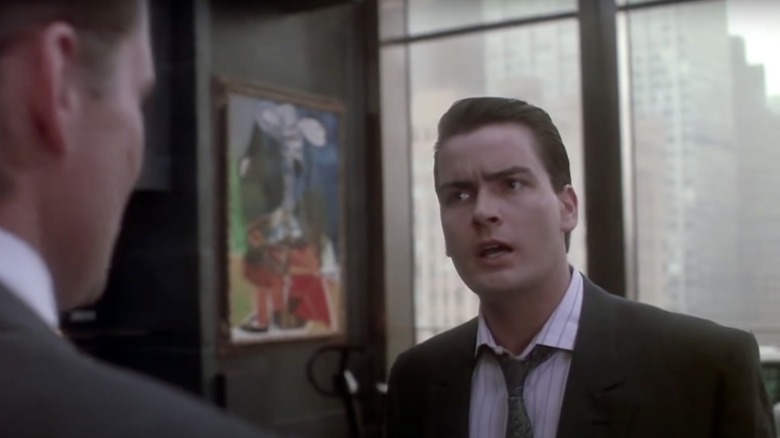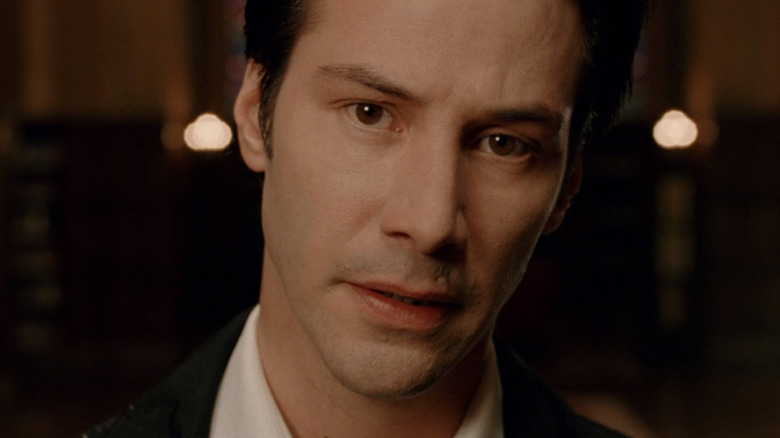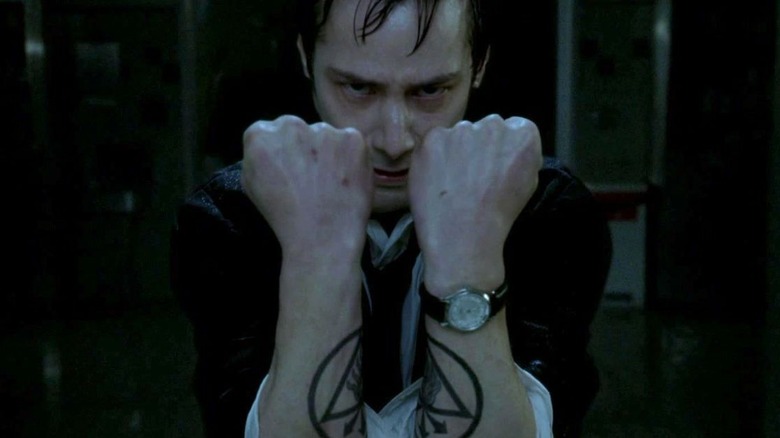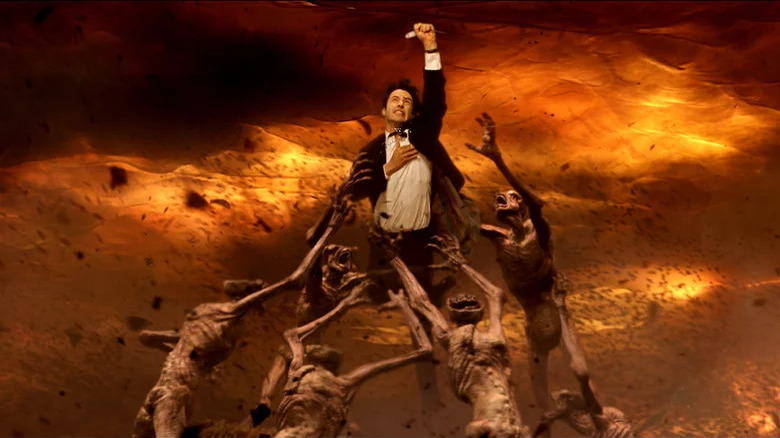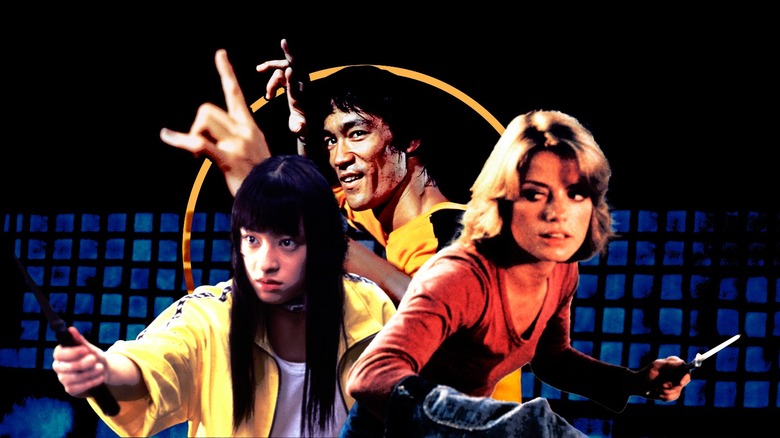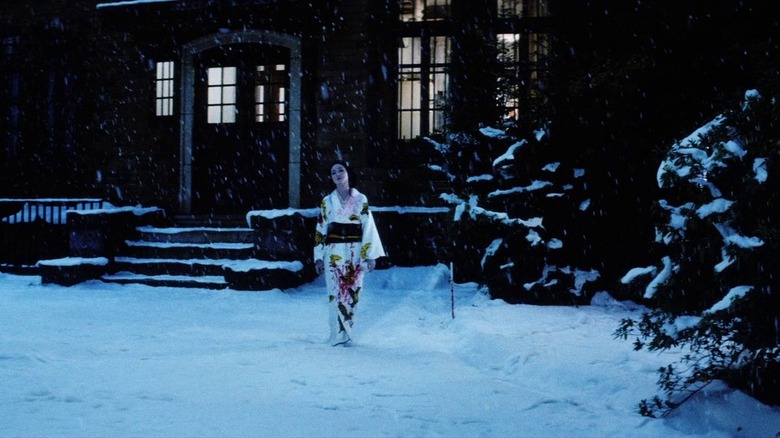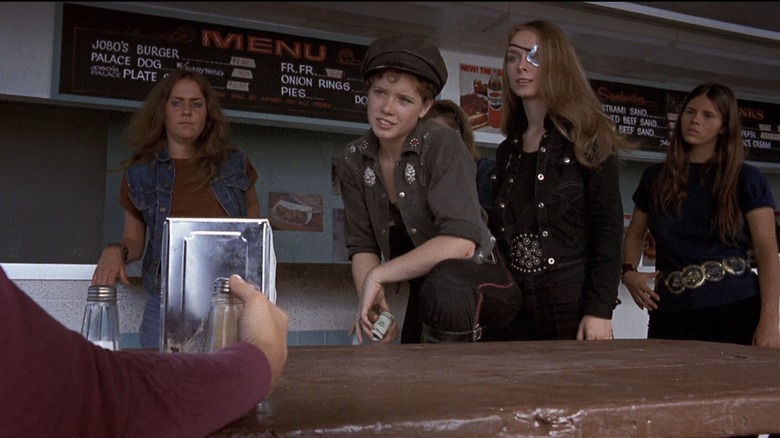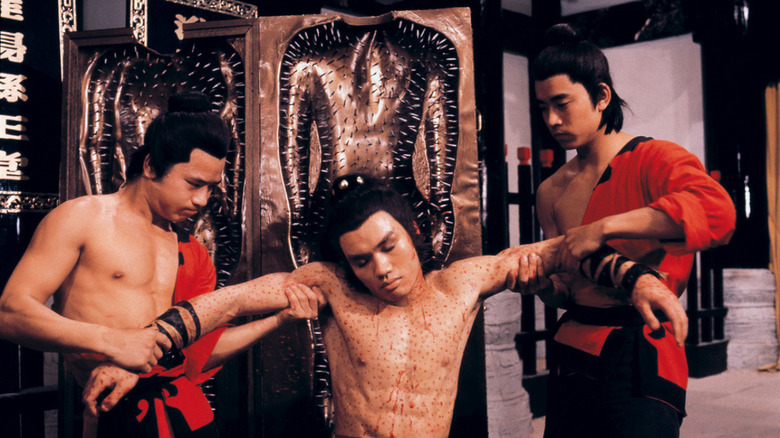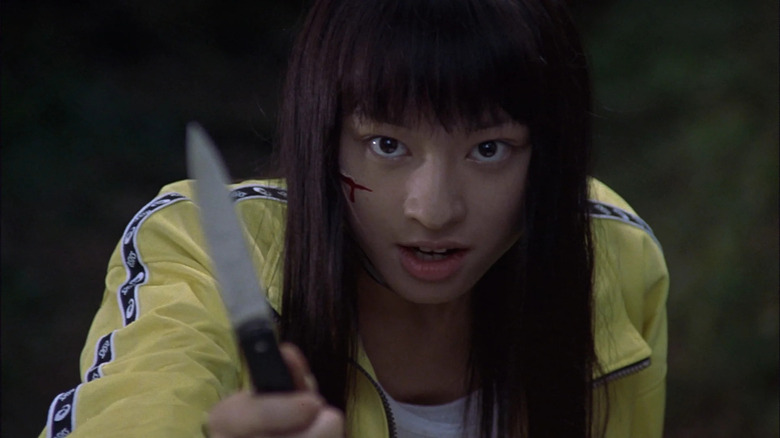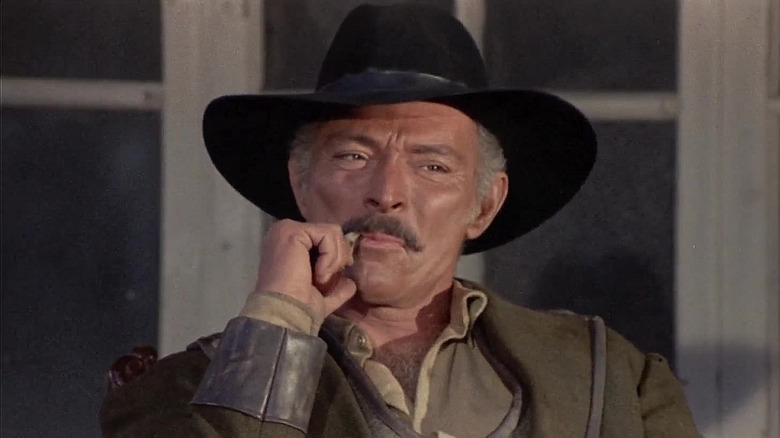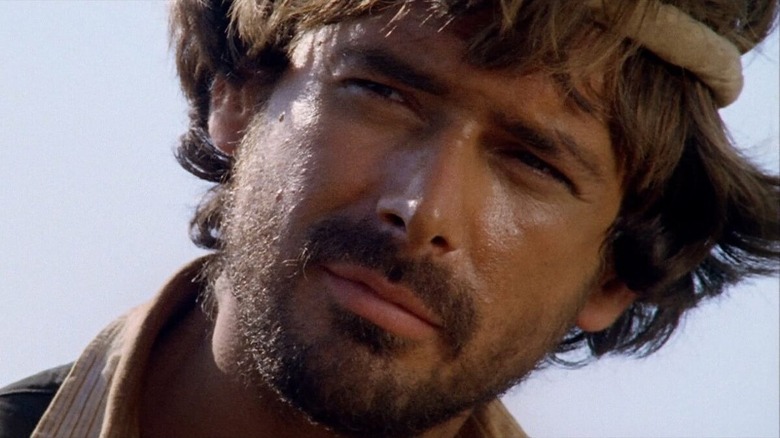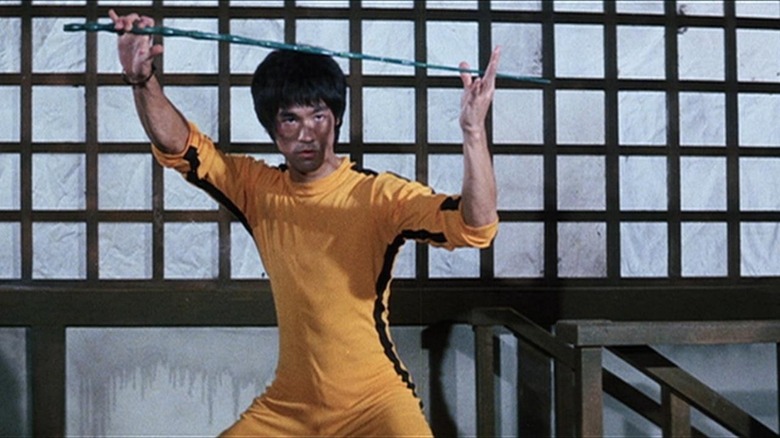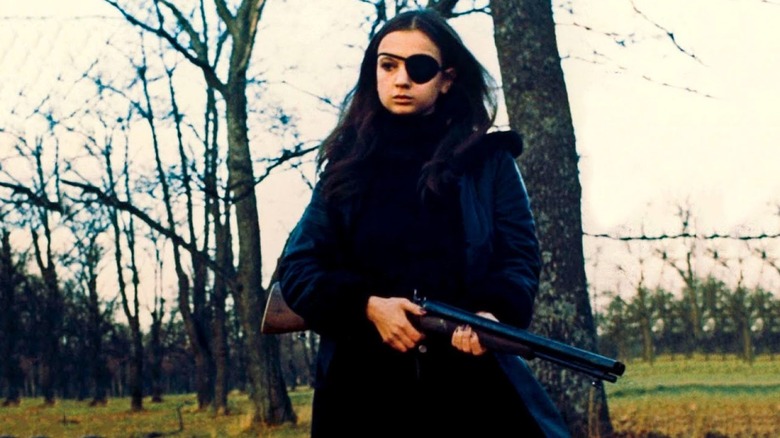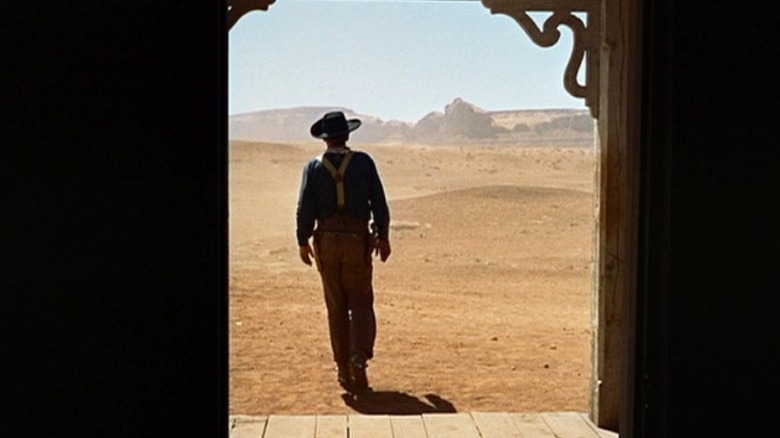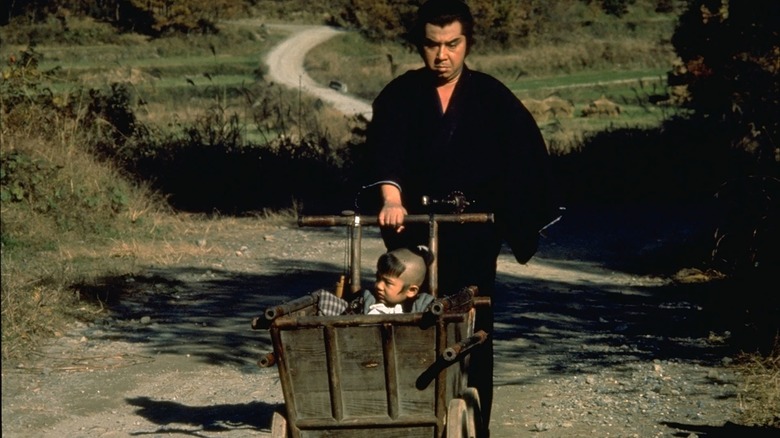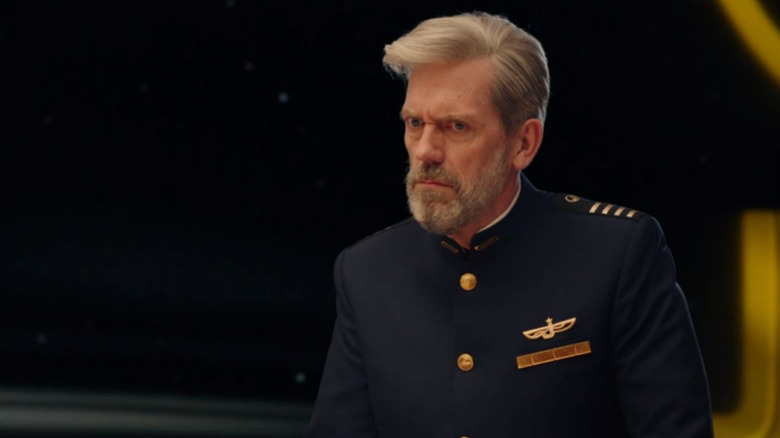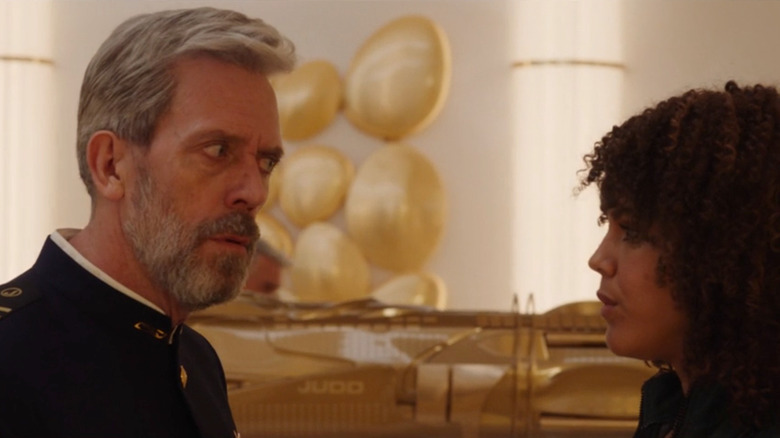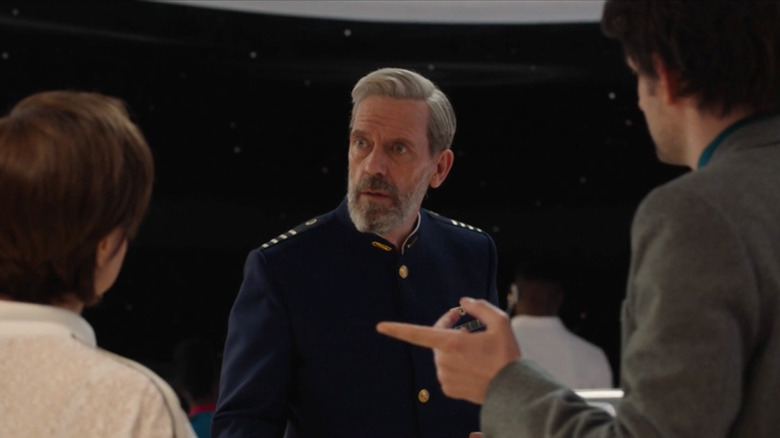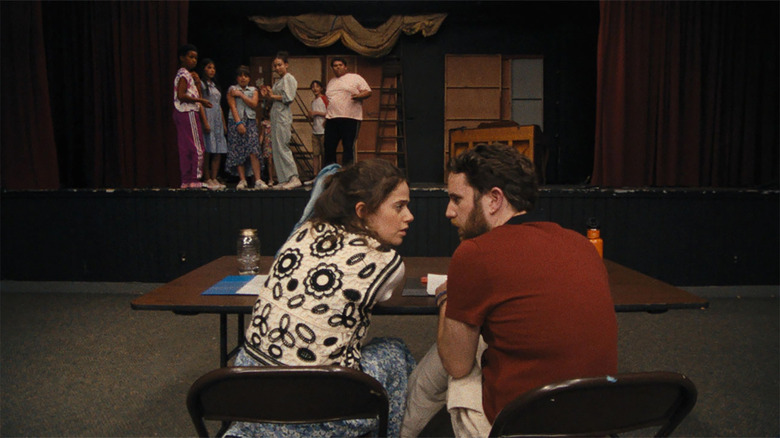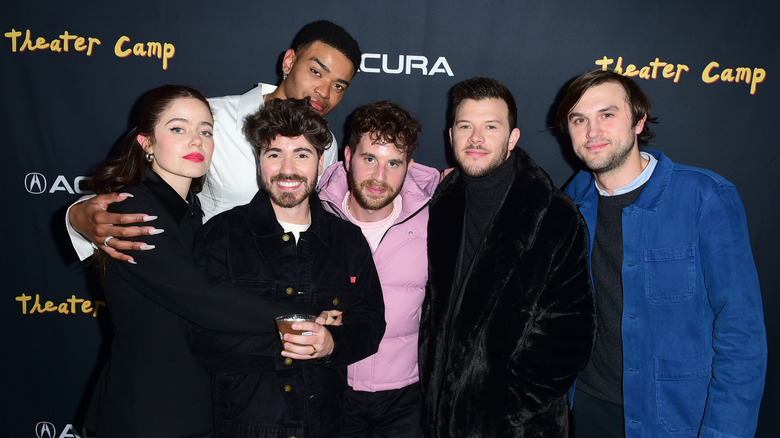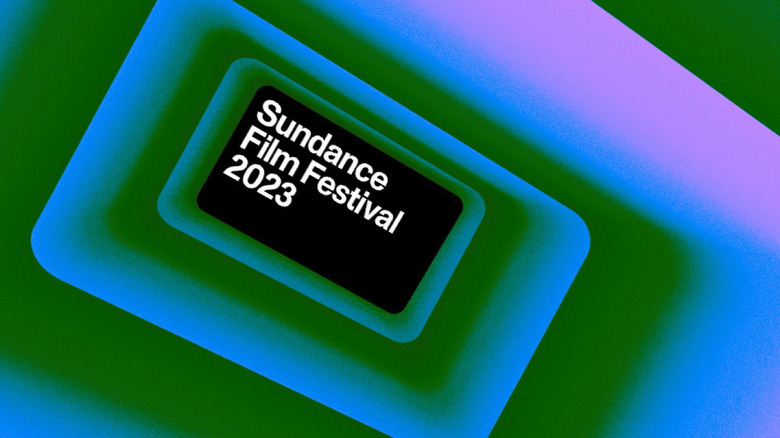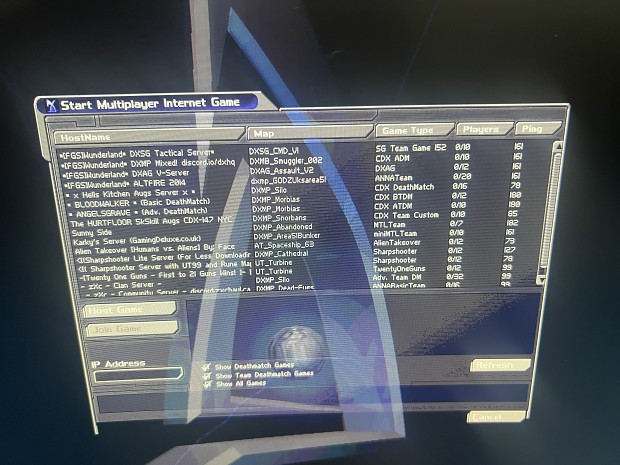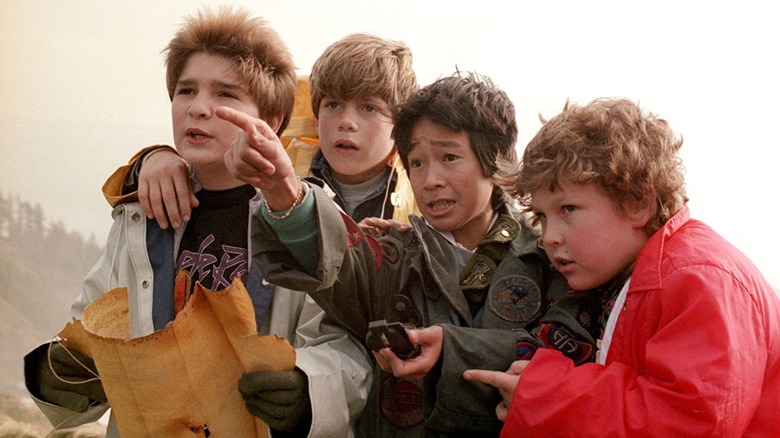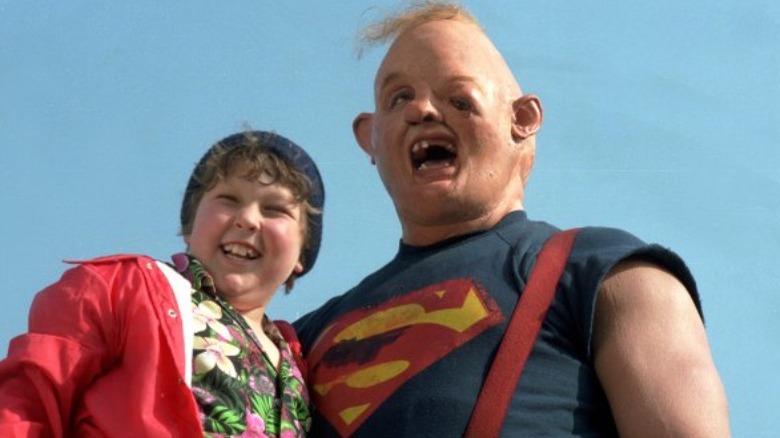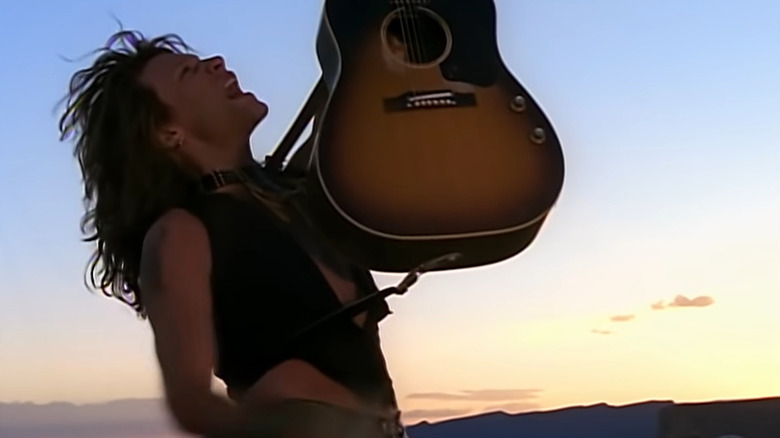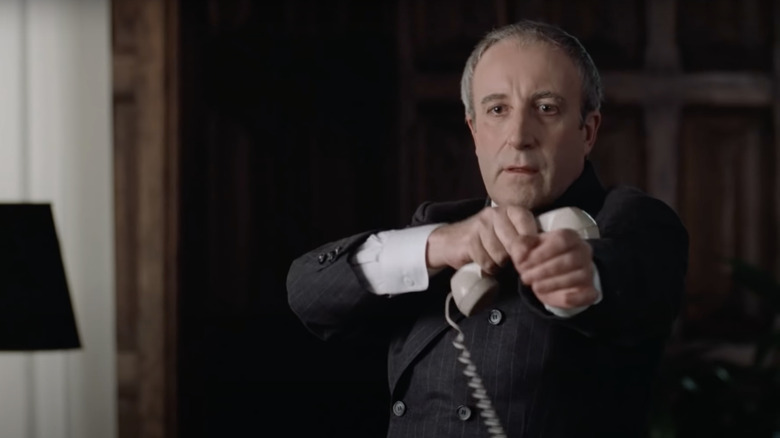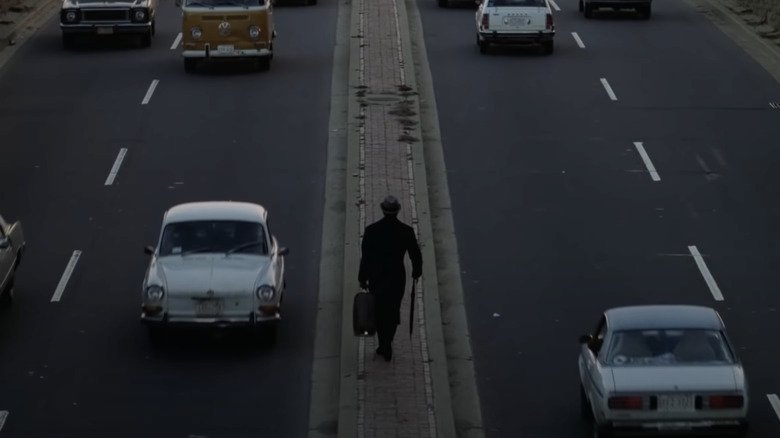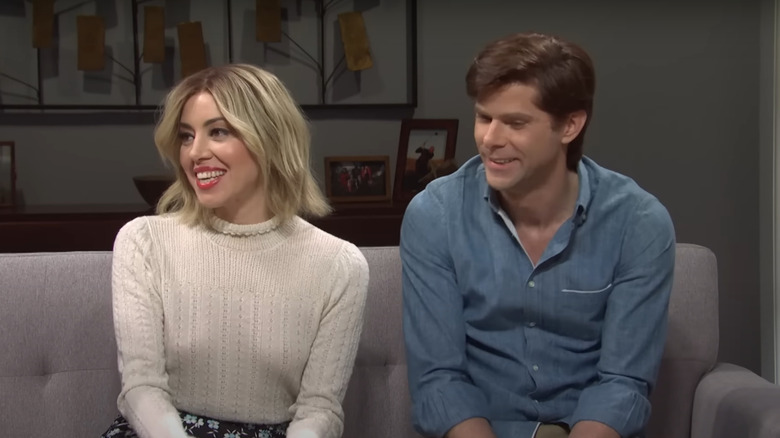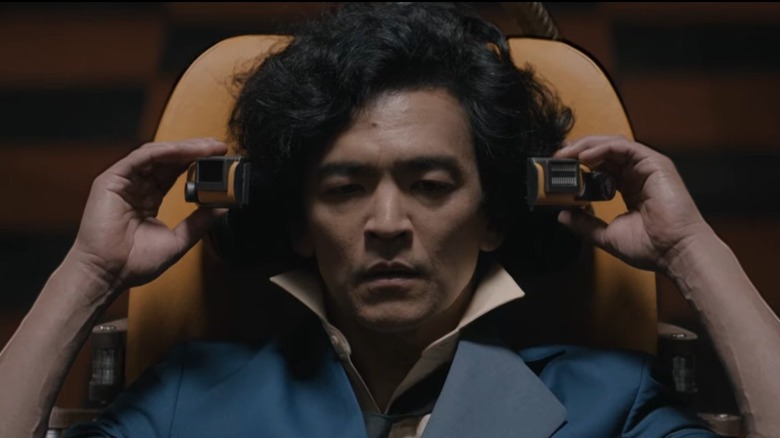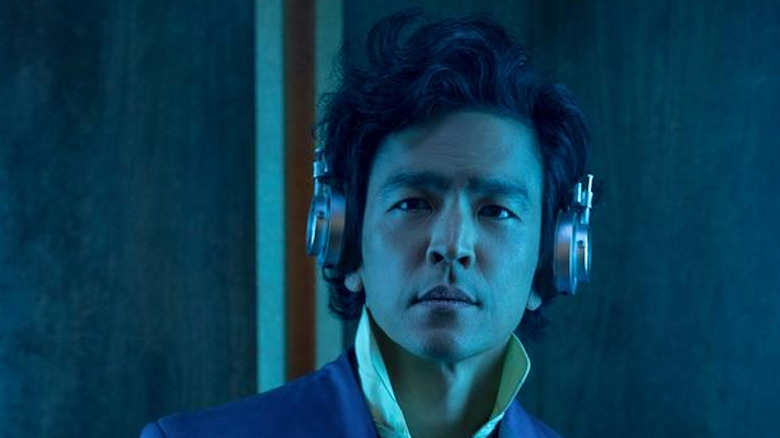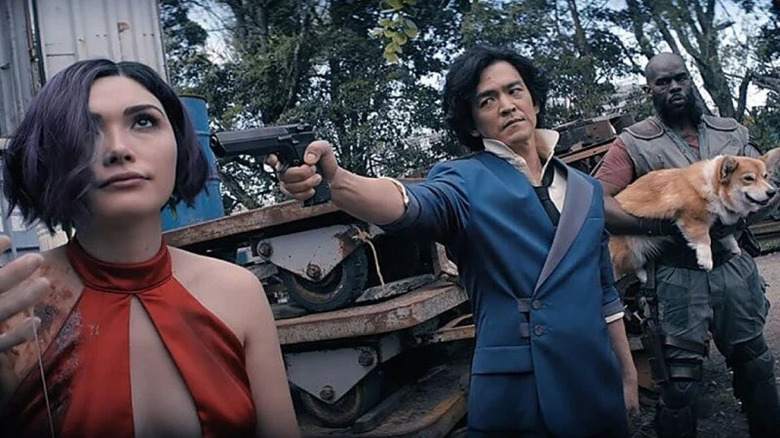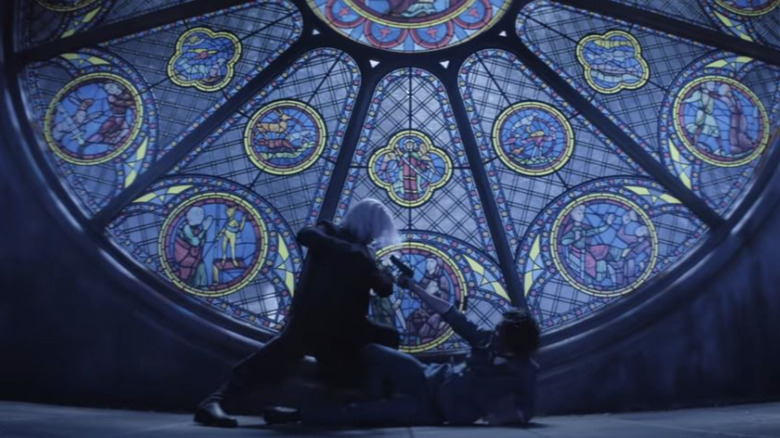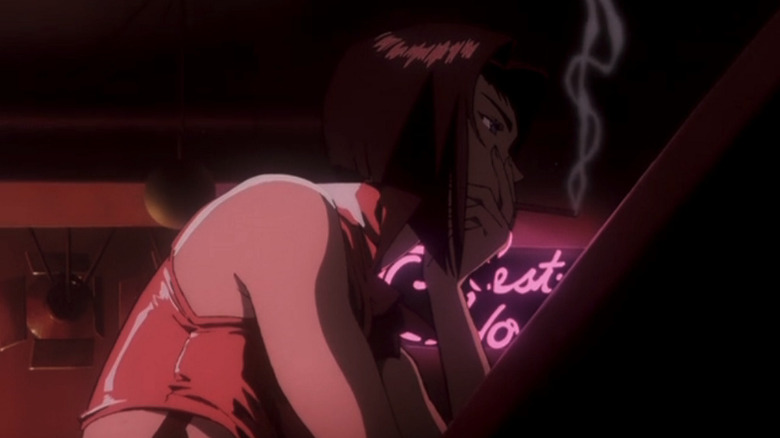
Few sights are more exhilarating than a well-choreographed martial arts sequence. It's a dance between the actors, stunt team, camera, and director. You're probably familiar with critically acclaimed mega-hits like "Crouching Tiger, Hidden Dragon," "The Matrix," "Ip Man," and "The Raid: Redemption," but for each of these well-known classics, dozens fly under the radar. Whether they got lost in the streaming shuffle or are too niche for general audiences, we wanted to kick and punch our way through the most underrated martial arts films.
Our list features films we think deserve more respect (and eyeballs on them). On the surface, a movie like "The Transporter" seems like a forgettable B-movie, but it roundhouse kicked Jason Statham into the modern-day action hero A-list. Or maybe you're a fan of Jet Li's more prestigious outings like "Hero," so you skipped his collaborations with Luc Besson, missing out on one of his best acting performances in "Unleashed." Maybe genre mash-ups are a little too hit-or-miss for you, but we guarantee you've never seen anything like 2000's cult classic, "Versus." Now that you've had an appetizer for an assault on your senses, this list of kickass movies will deliver. Let's jump-kick right into it.
The Night Comes For Us
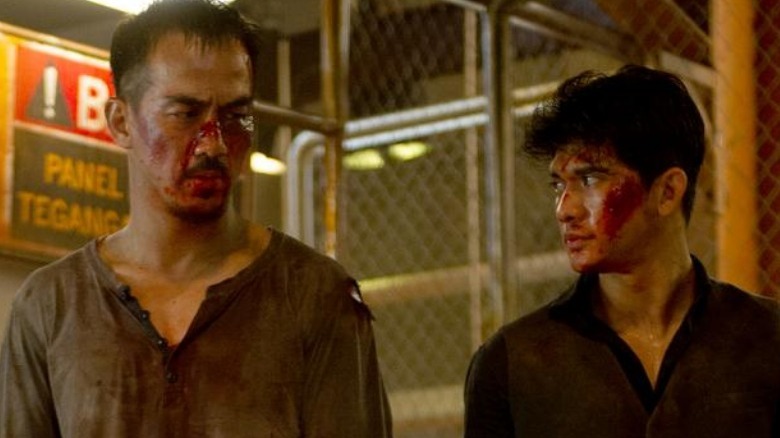
One of the most brutal action movies ever made, "The Night Comes for Us," follows Ito (Joe Taslim), a member of the Triad's elite death squad known as the Six Seas. When Ito can't bring himself to kill the lone survivor (Asha Kenyeri Bermudez) of the Triad's massacre of a village, he's forced to protect them both from every killer the Triads can throw at them. With the help of a mysterious woman known only as the Operator (Julie Estelle), they go up against dozens of henchmen with fists, machetes, guns, knives, and piano wire.
Joe Taslim and Iko Uwais became instant martial arts sensations after co-starring in "The Raid: Redemption," and pitting them against each other in this film is an action fan's dream come true. Imagine "Man on Fire" meets "The Raid: Redemption," with bone-crunching violence and gore. It's a bloody masterpiece of martial arts mayhem. There are too many incredible fight scenes to list: like the Operator's battle with the piano wire-wielding Alma (Dian Sastrowardoyo) and the assassin Elena (Hannah Al Rashid), in which even disembowelment doesn't stop the fight. We told you this movie is violent, right? The main event between Taslim and Uwais is one for the record books and features the hero getting bloodier and taking more hits than in any fight in recent memory. If copious amounts of arterial spray aren't your thing, steer clear of this one.
SPL: Sha Po Long Aka Killzone
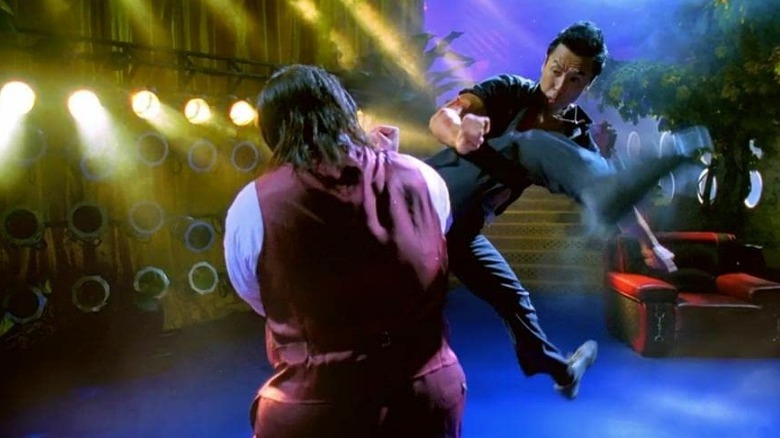
The generic US title "Killzone" may be why this film isn't more popular. The original Chinese title, "SPL: Sha Po Long," refers to stars in Chinese astrology that are destructive when they get too close — a perfect metaphor for this film. The plot follows Detective Chan (Simon Yip), who's diagnosed with a fatal brain tumor and forced into early retirement. Still, he's determined to take down the ruthless Triad boss Wong Po (Sammo Hung). Chan's replacement, the take-no-prisoners martial arts dynamo Ma Kwun (Donnie Yen), is assigned to help Chan finish the job. Combining solid police drama with a complex villain and some tragic moments makes this film essential.
The film's main attractions are director Wilson Yip, the action maestro responsible for the jaw-dropping action in the "Ip Man" saga, and stars Sammo Hung and Donnie Yen, legends of two generations of Hong Kong martial arts films, facing off. Their final battle is an exhaustingly brutal five-minute brawl combining classic martial arts with jiu-jitsu-style takedowns. As Wong Po's hired assassin, Jing Wu is a fun and ferocious adversary, rocking some impressive knife skills in a fight against a baton-wielding Donnie Yen. However, the profoundly sad third act makes this film's impression last. It leaves the audience feeling the sinking feeling there is no winner in such a violent world. We won't spoil the ending, but be warned: It's an emotional doozy.
The Villainess
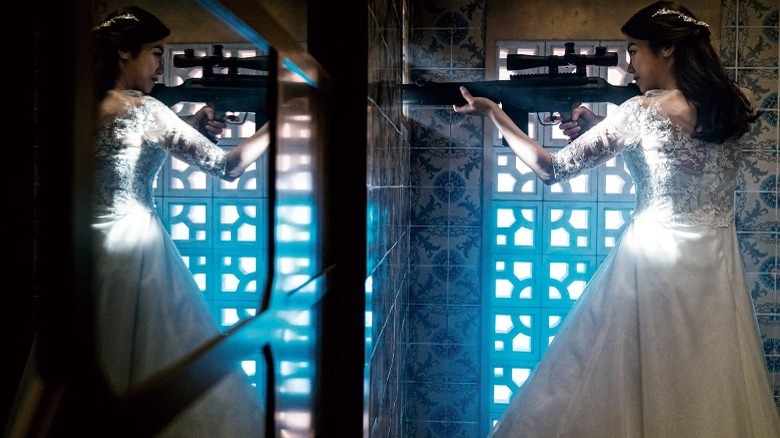
"The Villainess" combines melodrama with some of the most electric action sequences in recent memory. Sook-hee (Kim Ok-bin) was trained from her youth to be an assassin. She eventually falls in love and dreams of a normal life, only to have that shattered by tragedy. Seeking vengeance, Sook-hee kills the gang she believes murdered her boyfriend, only to get scooped up by a government agency that offers her freedom if she becomes their weapon. Betrayals, bullets, and bodies pile up in another South Korean action extravaganza.
The opening sequence is shot entirely from Sook-hee's POV as she hacks a dozen blade-wielding bad guys to pieces, blasting down flights of stairs, through windows and doorways, and down a narrow hallway. This shot continues until we see her face in a smashed mirror. We then see Sook-hee take on a gym full of goons in one continuous shot until she jumps out a window and is stopped by the police — and that's just the first five minutes. Kim Ok-bin handles the fight scenes and the drama will equal prowess. She's a force of nature. A sword fight on moving motorcycles is so jaw-dropping that "John Wick 3" pays homage to it. The complex plot mixed with brutal and death-defying action scenes makes "The Villainess" a must-see for all martial arts fans.
Iron Monkey
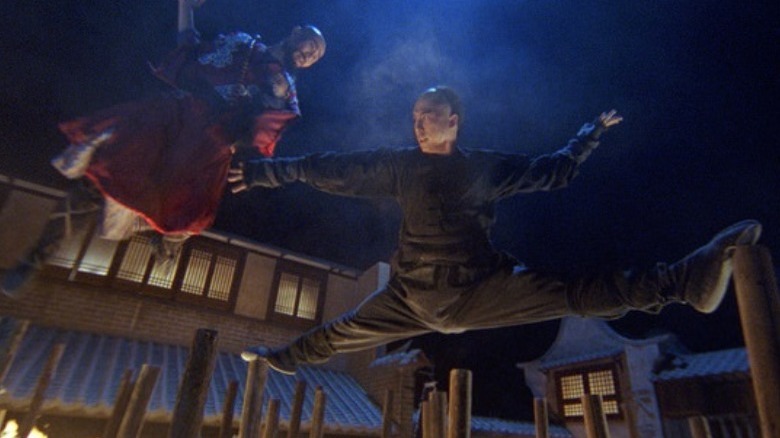
Yuen Woo Ping's "Iron Monkey" has the Quentin Tarantino stamp of approval, and for a good reason. The plot is very Robin Hood-esque, with Yu Rongguang playing a physician by day and the Iron Monkey, a masked thief who steals from the rich to give to the poor, by night. A new martial artist named Wong Kei-Ying (Donnie Yen) arrives in town and is mistaken for the Iron Monkey and imprisoned. Soon, he's set free to hunt the real Iron Monkey while his son is held captive. What starts as an antagonistic relationship builds into an epic team-up. With the help of a young woman named Miss Orchid (Jean Wang), the trio confront the corrupt leaders in a series of gravity-defying wire-work showdowns, including a particularly mind-blowing fight scene atop flaming bamboo sticks
"Iron Monkey" was released in China in 1993, but audiences in the United States wouldn't see it until 2001. After the international success of "Crouching Tiger, Hidden Dragon," studios searched for the next martial arts hit. Miramax picked up Yuen Woo Ping's earlier film. "Iron Monkey." The film also introduced Donnie Yen to American audiences. You'll often see his name on many "best of" martial arts lists. His talent and skills are undeniable, and it's no wonder he was scooped up for big-budget Hollywood movies like "Blade 2," "Rogue One," and "John Wick: Chapter 4."
Kiss Of The Dragon
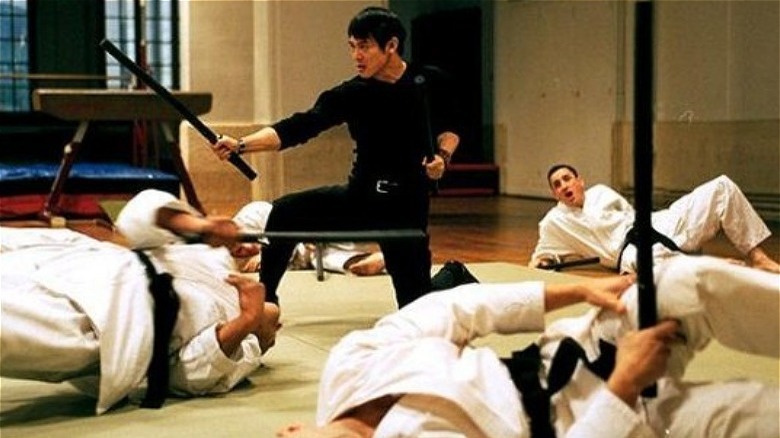
When you combine the talents of director Luc Besson with a story by the legendary Jet Li, you get the action-packed (and sometimes silly) "Kiss of the Dragon." Jet Li plays Chinese cop Liu Jian, who goes to Paris to help take down a major drug ring. When he's framed for his contact's murder by a corrupt cop (Tchéky Karyo), Jian finds an unlikely ally in reluctant sex worker Jessica (Bridget Fonda). Together they must fight to stay alive and rescue Jessica's kidnapped daughter.
Jet Li told Hollywood.com this was to be a return to form for action films after wire-work heavy "Matrix" copycats, saying: "You can see next few years, a lot of actresses, actors, little boys, cartoons, everybody can do martial arts because of cable, computer, special effects. I thought it was time for me to go to some traditional way, to show some hardcore action sequence. The audiences say, 'Show us something only Jet Li can do.'" That is exactly what this movie does. The return to practical beatdowns after a wave of overdone CGI and choppy editing was a breath of fresh air for the genre. The fight between Jet Li and a dojo full of police recruits full of police recruits alone earns the film a place on this list alone.
Azumi
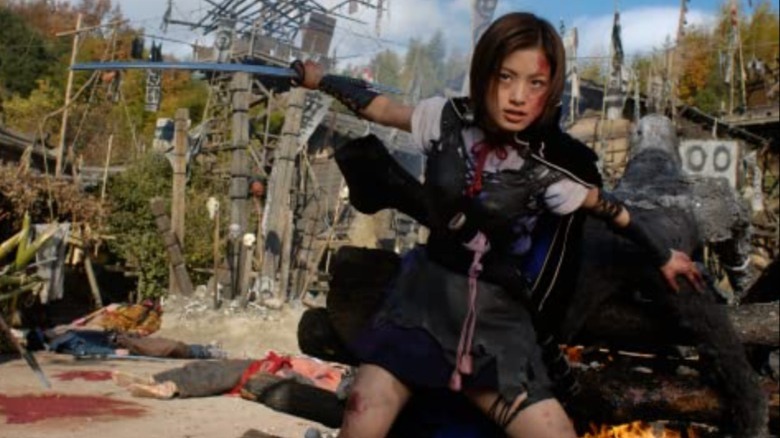
"Azumi" is a samurai action epic directed by Ryûhei Kitamura, starring Aya Ueto in the title role. The plot follows Azumi and a group of orphans trained by a master swordsman for an unknown mission in the mountains of feudal Japan. In their final test, they have to pair up with their best friend and try to kill each other. The remaining assassins leave everything behind and embark on their true mission to change Japan by covertly assassinating a group of ruthless warlords. Sword fights ensue, blood sprays and loyalties are tested and broken, all leading to a wild third-act bloodbath.
"Azumi" has fantastic samurai swordplay and tremendous human drama. It asks questions like, "Who is worth saving if they don't serve the greater good?" and "How violent is one willing to become in the name of loyalty?" But the real reason this movie makes our list is the final battle between Azumi and 200 soldiers. Kitamura uses wide shots and aerial views to give the audience the scope of the fight. Azumi slices her way through nameless goons, tossing one's head into the crowd. She even cuts an arrow down the middle so that it pierces two foes that were ready to attack. The film climaxes in a zany showdown with the villainous Bijomaru Mogami (Joe Odagiri). It's over-the-top at times, emotionally devastating at others, and overall, an entertaining ride.
Hard Target
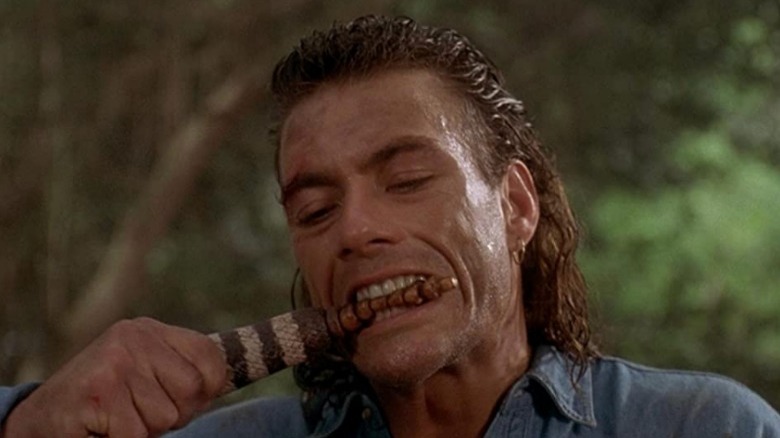
Take the classic premise of "The Most Dangerous Game," add Jean-Claude Van Damme playing a butt-kicking drifter named Chance Boudreaux and John Woo's flare for doves and bullet ballet, and you've got "Hard Target." Boudreaux is hired by Natasha (Yancy Butler) to track down her missing father, only to discover a sadistic group of wealthy men who hunt homeless people for sport. Boudreaux is thrown into this game of life or death, and let's just say the bad guys took a "Chance" on the wrong contestant for their sinister game. This movie is cheesy and excellent, with split-kicks, flying bullets, Van Damme's fantastic flowing mullet, and slow-motion galore.
"Hard Target" is often overlooked in John Woo's epic filmography. After directing Hong Kong action masterpieces like "Hard Boiled," "The Killer," and "A Better Tomorrow," Hollywood came knocking. His biggest hit in the U.S. was "Face/Off," the bonkers cult classic where Nicolas Cage and John Travolta trade faces, but "Hard Target" is a solid action film. It's also a prime slice of '90s cheese, with one-liners aplenty, the same roundhouse kick showcased from multiple angles for maximum impact, and a fiery showdown between Van Damme and genre favorite Lance Henricksen with Woo's trademark doves flying amidst the beautifully choreographed mayhem. There's even a scene where Van Damme grabs a rattlesnake with his bare hands, punches it into unconsciousness, and then bites off its rattle. If that isn't a perfect mix of silly and awesome, we don't know what is.
Headshot
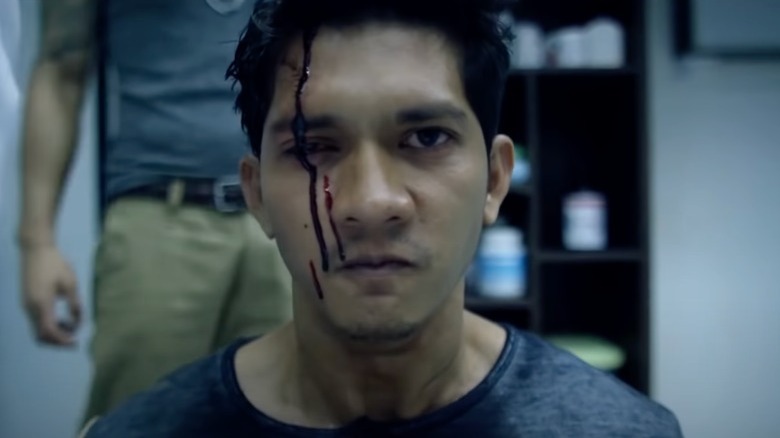
If you saw "The Raid: Redemption" and are clamoring for another ultra-violent flick featuring Iko Uwais dishing out more savage beatdowns, look no further than 2016's "Headshot." When Ishmael (Iko Uwais) wakes up on a beach with no memory, he finds help in Dr. Ailin (Chelsea Islan). Ishmael soon discovers he is part of a ruthless crime syndicate with a penchant for kidnapping children and training them to become loyal soldiers to leader Lee (Sunny Pang). Once Dr. Ailin and a young girl are taken by Lee and his gang, Ishmael becomes a one-man army on a mission to get them back.
Imagine a mix of the amnesia story device of the "Jason Bourne" films, a child soldier backstory, and the visceral fighting style of "The Raid: Redemption," and you get a hint at what you're in store for. Fair warning: This movie is incredibly violent, and the main villain is genuinely awful, with no regard for innocent life. Never fear, though. Ishmael exacts sweet revenge on Lee and his crew, taking on multiple gang members. This leads to a showdown where he works his way through Lee's top assassins in one-on-one combat. Each bout tops the last and reveals more about Ishmael's dark past. Sit back and get ready to be shocked by how far this film goes.
Brotherhood Of The Wolf
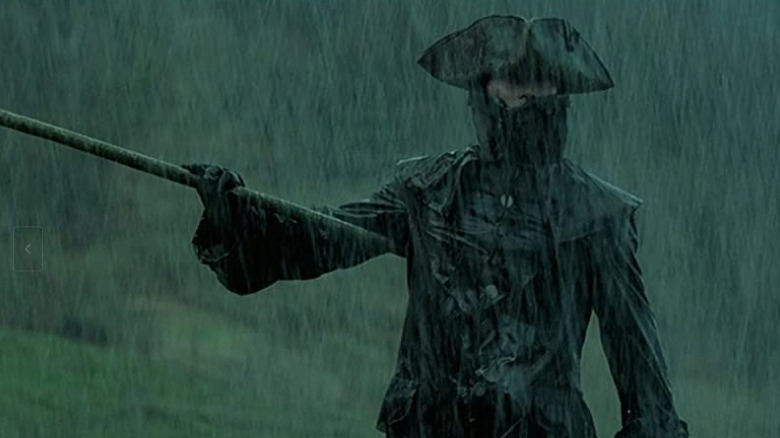
This choice may seem odd, given that "Brotherhood of the Wolf" is loosely based on events in 18th-century France and an investigation into the elusive Beast of Gévaudan. In the film, King Louis XV of France sends his knight, Grégoire de Fronsac (Samuel Le Bihan), and his Iroquois warrior friend, Mani (Mark Dacascos), to investigate the brutal murders of women and children in the peaceful town of Gévaudan that locals believe are being perpetrated by a giant wolflike beast. This description may not scream martial arts classic, but with Mark Dacascos' abilities and the gorgeous visuals unleashed by director Christoph Gans, it more than earns its stripes.
Christophe Gans directed the criminally underseen live-action adaptation of the Manga "Crying Freeman," but he demonstrates a true mastery of his craft with "Brotherhood of the Wolf." This film combines the cinematography of a historical epic and infuses it with horror elements and jaw-dropping fight scenes that use slow motion to emphasize but never distract. Mark Dacascos fights scumbags attacking a woman in the rain, and the action slows down to show individual raindrops. He dispatches a group of rival hunters and later goes toe-to-toe with the beast. In the third act, the movie becomes a blood bath. "Brotherhood of the Wolf" is an everything-and-the-kitchen-sink historical popcorn movie that works.
The Transporter
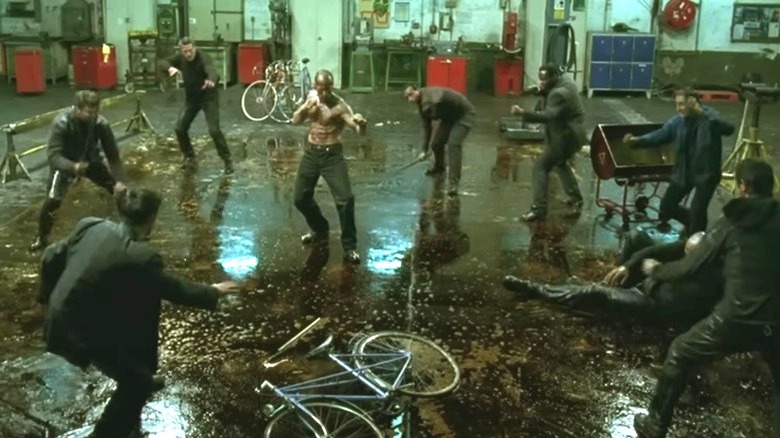
It's hard to believe the wise-cracking cockney crook from "Lock, Stock and Two Smoking Barrels" would become one of the biggest action stars on the planet, but once Jason Statham blasted on the screen as Frank Martin in "The Transporter," a new action hero was born. The plot is simple. Martin transports packages for shady clientele. He only has three rules: Never change the deal, no names, and never open the package. He breaks his own rule and finds out he's transporting a woman named Lai (Shu Qi), the daughter of a Chinese crime lord, to a Wall Street scumbag. All hell breaks loose as Frank falls for Lai, and several henchmen fall — after being hit by Frank.
"The Transporter" could be overlooked as a silly B-movie (which it is), but it's also a fantastic showcase for Statham's fighting skills. Statham uses guns, hand-to-hand combat, and anything he can find in the room to fight off legions of nameless henchmen. In a scene that is both hilarious and awesome, Statham finds himself surrounded. He kicks over tubs of oil, breaks off two bike pedals, and uses them to easily skip around as the bad guys slip and flop. It's a perfect example of the tone of the "Transporter" franchise. Even if you don't love the movie, there's no denying it launched the dozens of snarling Statham action movies that followed.
Equilibrium
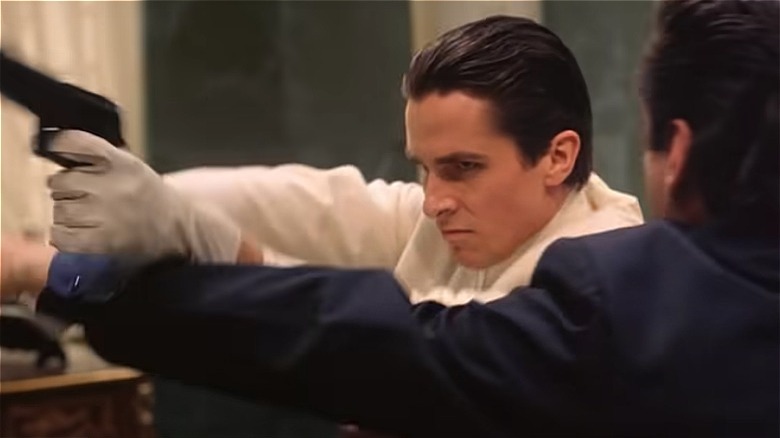
"Equilibrium" had the misfortune of being released the same year as "The Matrix." Its trailers, with leather-clad Christian Bale and Taye Diggs duking it out, seemed too similar for most audiences to take the gamble, but we promise it stands on its own. The story plays out like "Fahrenheit 451" dialed up to 10. After World War III, it is believed that human emotions caused the devastation, so they are outlawed, and the population is forced to take an inhibitor drug called "Prozium II." Christain Bale plays John Preston, a government officer on a task force known as Clerics. After accidentally missing a dose of Prozium II, emotions and memories creep back, sending him down a deadly path to uncover the conspiracy.
While "The Matrix" still reigns supreme for late '90s sci-fi (and action films in general), "Equilibrium" is a more than worthy entry. Not only is this an incredibly dark and dystopian science fiction film, but it also invented a new fighting style known as gun-kata, which envisions guns as an extension of one's self. Gun-kata uses more fluid motions to anticipate the enemy's attack while dodging and deflecting, giving a master of the form nearly precognitive abilities. The idea sounds profoundly silly, and it is, but it's executed with such flair and commitment through the choreography, direction, and acting that you can't help but go along for the ride.
Versus
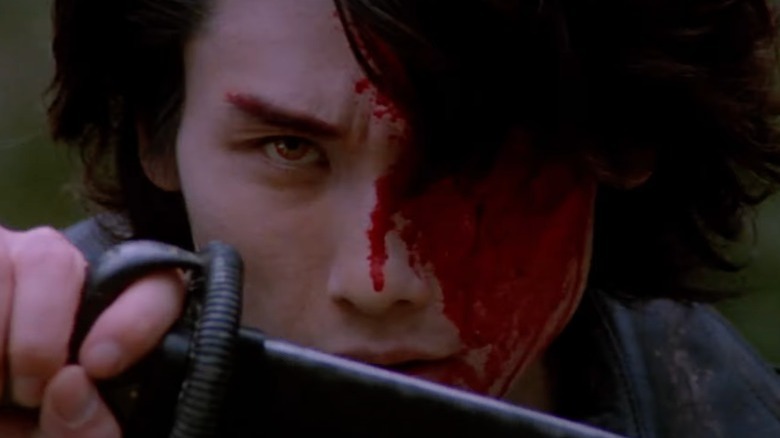
In Ryûhei Kitamura's wacky horror-martial arts hybrid "Versus," two escaped convicts, the Yakuza, and a mysterious woman end up in an unexpected supernatural conflict after they discover the Yakuza's favorite spot for hiding dead bodies also happens to be "The Forest of Resurrection." When some of the gangster's greatest "hits" come back to haunt and maim them, it's nonstop action and zombie gore.
We hesitate to give away too much because watching Japanese megastar Tak Sakaguchi take on hoards of undead assassins in a movie chock full of virtually nonstop action sequences is an otherworldly experience. Often described as "The Evil Dead" meets "The Matrix," which only offers a sliver of this completely off-the-wall experience, the movie has a loving and hand-made feel while making the most of its low budget with killer choreography and wild practical gore effects. One bad guy gets his head punched through, and his eyeballs are stuck in Tak's clenched fist. Limbs are lopped off, heads roll, and there may even be a centuries-old conflict in which existence hangs in the balance. "Versus" has the feel of a cult classic splattered across every frame.
Unleashed
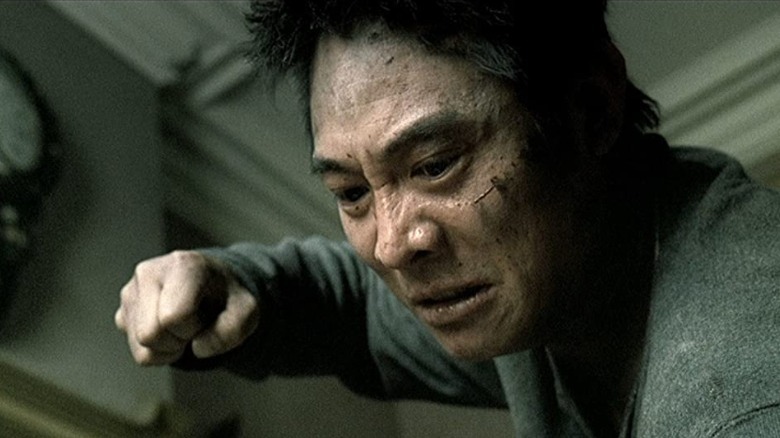
Luc Besson and Jet Li make our list for the second time with 2005's "Unleashed." The plot revolves around Danny the Dog (Jet Li), raised by a violent loan shark named Bart (Bob Hoskins) to be his enforcer. Bart unleashes him against anyone who doesn't pay up. Trained to attack the second Bart removes his collar, Danny is an animalistic force to be reckoned with. When Bart is seemingly "killed," Danny flees and is taken in by a blind piano tuner named Sam (Morgan Freeman) and his stepdaughter, Victoria (Kerry Condon). Through their kindness, Danny learns to be more human, but his violent past soon threatens to endanger his newfound peace.
"Unleashed" succeeds by blending the well-worn storyline of a killing machine finding his humanity with just enough of a twist to make it seem fresh and Jet Li's amazing fighting style. Danny the Dog is fierce and frightening while also being a believably sympathetic character. Li gives one of his best performances, walking the tightrope between vulnerability, humor, innocence, and ferocity. The fight tournament scenes where he is set loose are worth the price of admission alone, but the real draw is the compelling story that goes toe-to-toe with the gritty fight scenes.
Top Knot Detective
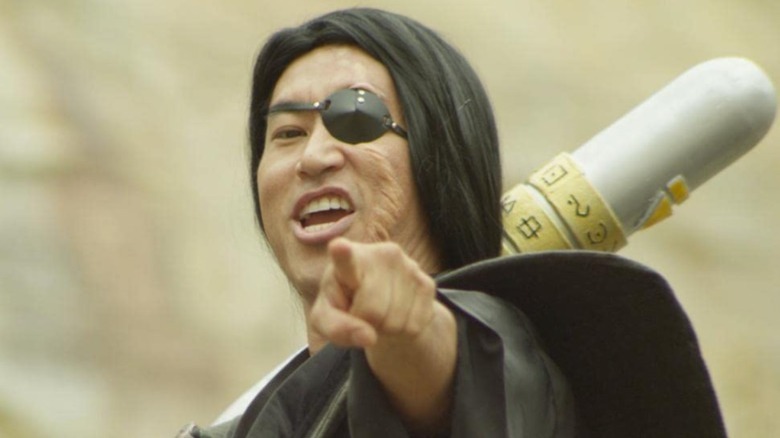
This last one is a bit of a wild card, but it's also one of the zaniest mockumentaries ever. "Top Knot Detective" follows Australian documentarian Des Mangan as he investigates the behind-the-scenes drama of the infamously failed '90s Japanese samurai show "Ronin Suiri Tantai," retitled "Top Knot Detective" for Western audiences. It tracks the meteoric rise of the show's unstable writer-producer-director-star Takashi Takamoto (Toshi Okuzaki). As detailed by Third Window Films, "on-screen he battles robot ninjas and penis monsters [while] off-screen jealousy threatens to demolish his legacy." If that description doesn't grab your attention, we don't know what will.
It isn't easy to make a convincing mockumentary. The story needs to be outlandish while keeping the performances and writing believable and never seeming too forced or scripted. "Top Knot Detective" is such an authentic recreation of a very niche fandom that, by the end, no one would blame you for being convinced "Ronin Suiri Tantai" was a real show. The interviews are earnest and deadpan, never tipping their hand that this is a joke. However, the main draw is the intricate VHS-style recreations of wacky '80s and '90s Japanese television. Filmmakers Aaron McCann and Dominic Pearce pay loving homage to "Lone Wolf and Cub," Ed Wood, "Power Rangers," and more. They pack the runtime with fight scenes, catchy jingles, flying limbs accompanied by excessive blood spurts, giant robots, and even an underlying true crime mystery. It's a one-of-a-kind, hilariously gonzo ride you should seek out.
Read this next: Jackie Chan's 15 Greatest Fight Scenes Ranked
The post The 14 most underrated martial arts movies appeared first on /Film.
